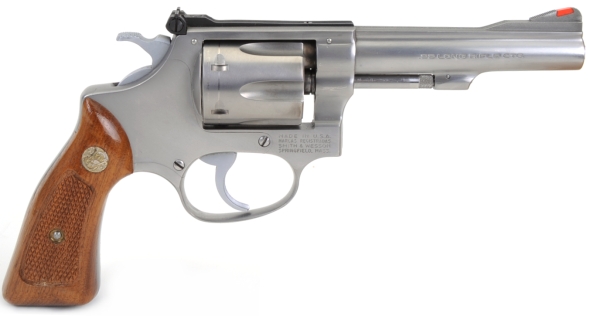
The 22/32 Kit Gun concept actually began with a San Francisco, California Smith &Wesson dealer named Phillip Bekeart. Bekeart contracted S&W to manufacturer a .22 rimfire revolver on a larger than traditional, square butt, S&W .32 hand ejector “I” frame. This original version, with 6″ barrel, was produced from 1911-1941 as the .22/.32 Hand Ejector Bekeart or .22/.32 Heavy Frame Target.
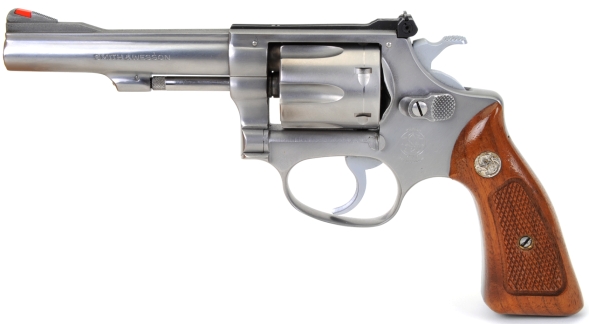
A more compact .22/.32 Kit Gun model was produced on the round butt “I” Frame with a 4″ barrel from 1935-1941. The term “Kit Gun” reflects the model’s compact size and suitability for being packed as part of a fishing tackle kit. Both firearms went on to become standard S&W catalogued firearms1). In 1957, the Target became the Model 35 and the Kit Gun the Model 34. In 1977, a new .22/.32 Kit Gun was introduced as a square butt “J” Frame with a 4″ barrel, as pictured above.
An easy gun to master…
There are lots of reasons why the little Kit Gun is easy to shoot accurately. The rear sight is micro adjustable and it stays put…. and yes, it could use a little blackening. The rear sight rib runs right into a barrel rib and the barrel rib extends to the a ramped front sight. All of the surfaces are either bead blasted or serrated to kill reflection.
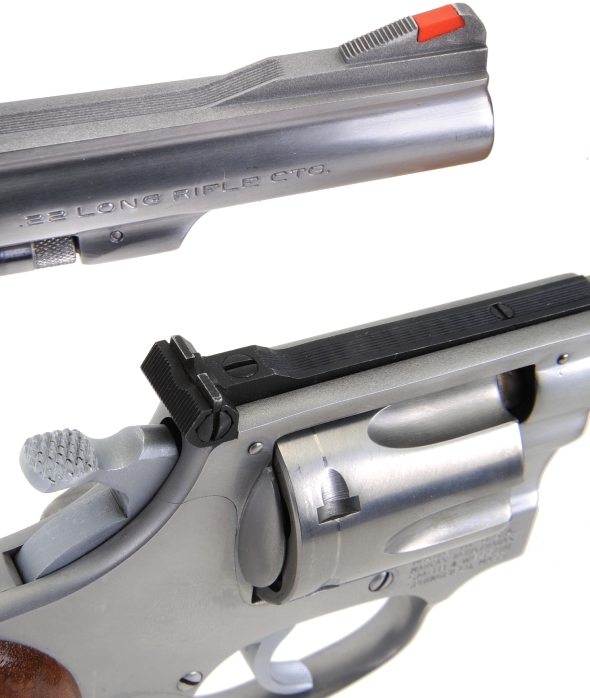
In addition to the good topside hardware, this Model 63 has a medium width checkered target hammer and a smooth trigger surface. A coil spring double/single action revolver, trigger pull is smooth; 7 lbs for the double action pull and a crisp 3 lbs for single action.
Like most swing out cylinder revolvers, the Model 63 is fast and easy loading and ejecting. If there is any down side, it is the small grip that takes some time to find a comfortable grip. If that proves to be too much work, there are lots of oversized aftermarket grips, but they pretty much defeats the benefit of a compact 22 rimfire and the intent of the Kit Gun.
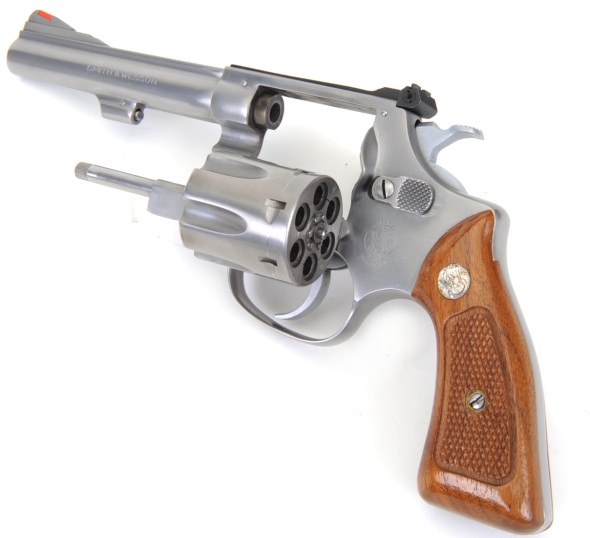
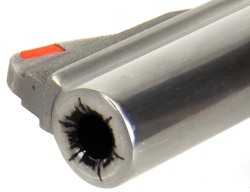

Email Notification